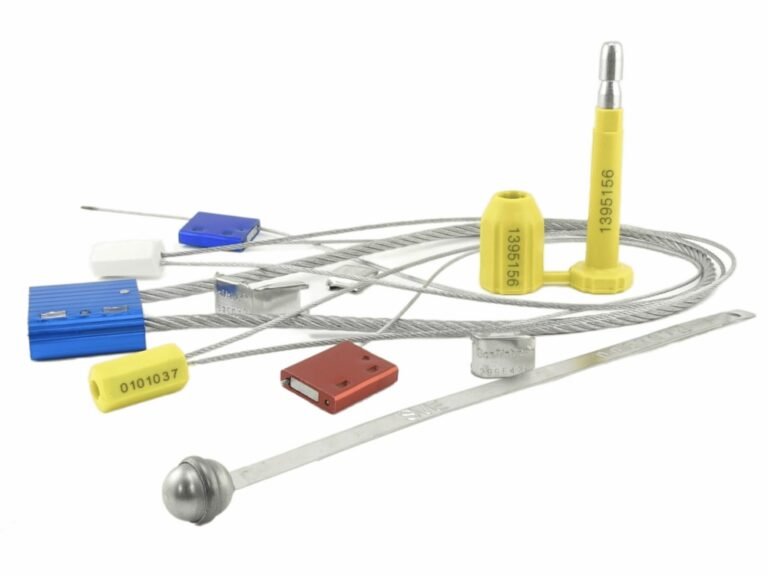You think a seal on a truck door is enough to protect your cargo. But this narrow view leaves your entire supply chain exposed, leading to untraceable losses and costly disputes.
Security seals are vital across the entire logistics chain: for ocean freight containers, air cargo ULDs, railcars, warehouse access points, and even utility meters for compliance. They create a secure, accountable trail for your goods.
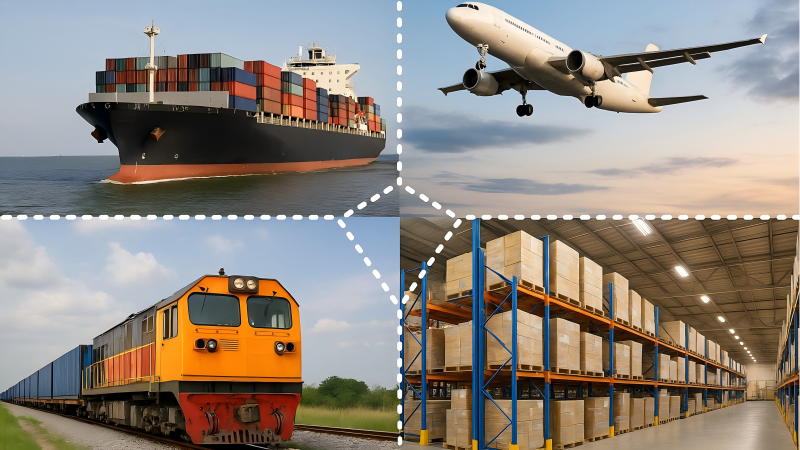
After more than 15 years in logistics security, I can tell you that global logistics is a chain, not a single point. The true value of a security seal is not just locking a door. It's about creating a clear, undeniable "certificate of responsibility transfer" between different stages of that chain. These five applications are not random; they represent the most critical handover points. They are precisely where theft, damage, and disputes are most likely to happen. Understanding this is the key to protecting your assets from end to end.
How Are High-Security Seals Essential for Securing Ocean Freight?
You put a standard seal on a shipping container and hope for the best. But a long sea voyage and multiple port handlings expose it to professional theft and extreme conditions, making loss almost inevitable.
Only a high-security bolt seal, compliant with ISO 17712, provides the necessary strength and tamper evidence for ocean freight. It acts as a robust barrier and a clear indicator of integrity upon arrival.
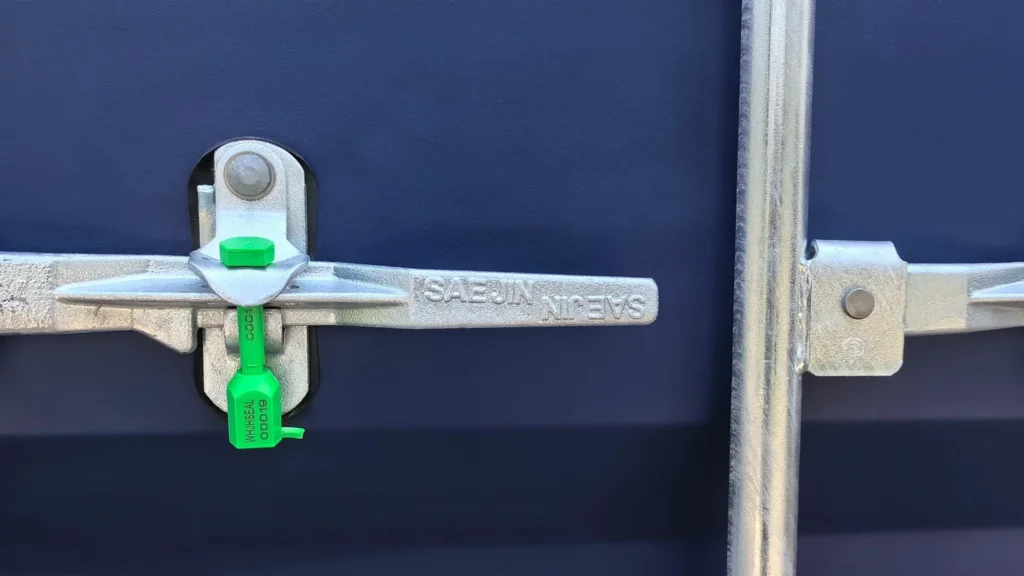
This is the most well-known application, but its importance can't be overstated. A container might be on a ship for weeks, handled by cranes and personnel in multiple countries. This is the highest-risk part of many supply chains.
I've seen clients lose entire shipments because they used a cheaper, weaker seal that was easily bypassed. The high-security seal isn't just a suggestion; it's a requirement for programs like C-TPAT. It requires bolt cutters to remove, sending a clear message to would-be thieves. More importantly, it gives the receiver a definitive starting point for their inspection. If that robust seal is compromised, the responsibility lies somewhere on the journey, not with them.
Comparing Seal Suitability for Ocean Freight
| Seal Type | Typical Use | Ocean Freight Suitability | Why? |
|---|---|---|---|
| Plastic Seal | Bags, crates, first-aid kits | Inadequate | Easily broken by hand or with simple tools. |
| Cable Seal | Trucks, tankers, valuing flexibility | Sufficient (in some cases) | Stronger, but can be less tamper-evident than a bolt seal. |
| Bolt Seal | Shipping Containers | Essential | Highest physical strength; designed to show clear evidence of tampering. |
How Do You Protect Air Cargo by Sealing ULDs and Carts?
Your high-value air freight is vulnerable on the tarmac. Unsealed carts and Unit Load Devices (ULDs) are easy targets for quick theft between the warehouse and the aircraft.
Sealing ULDs, trolleys, and catering carts with uniquely numbered pull-tight plastic seals or cable seals creates an immediate audit trail. It ensures that the contents are secure from the warehouse to the plane.
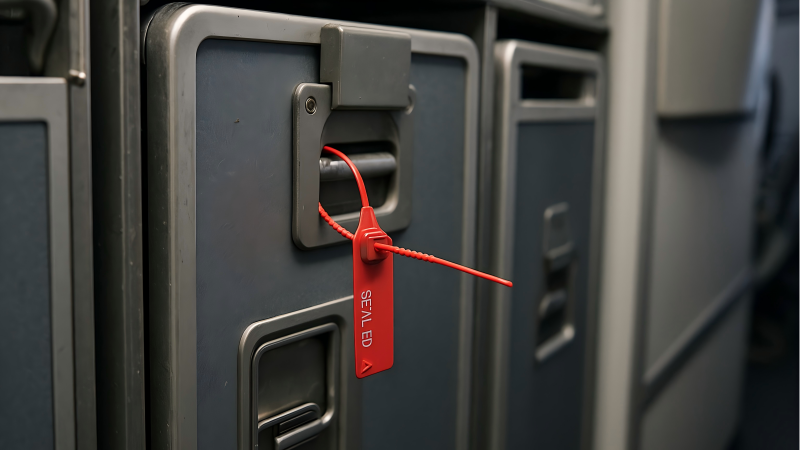
The speed of air freight is its advantage, but it’s also a security risk. Handovers are fast, and opportunities for theft are frequent but brief. In my experience working with air cargo handlers, the problem isn't breaking a massive lock; it's about quick, undetected access.
A simple, individually numbered plastic seal is the perfect solution here. It's not about brute strength; it's about immediate tamper evidence. Every cart and ULD that leaves the secure warehouse should be sealed. When it arrives at the aircraft for loading, the seal number is checked. If the seal is broken or the number doesn't match the manifest, the chain of custody is broken, and an immediate alert is triggered. This simple process closes a major security gap and holds specific ground crews accountable.
Key Sealing Points in Air Cargo
- Unit Load Devices (ULDs): Sealing the fabric or hard-shell doors prevents access to consolidated shipments.
- In-Flight Service Carts: Secures food, beverages, and duty-free items from theft by ground or air staff.
- High-Value Crates: Adds a layer of security for specific valuable items within a larger shipment.
How Do You Safeguard Rail and Intermodal Transport?
Your goods move from ship to rail to truck. But each time the container changes mode, it creates a new opportunity for theft, and a new argument over who is responsible for a broken seal.
Using barrier seals on railcars and intermodal containers ensures a consistent security protocol across different transport modes. The seal becomes the single point of truth during each handover.
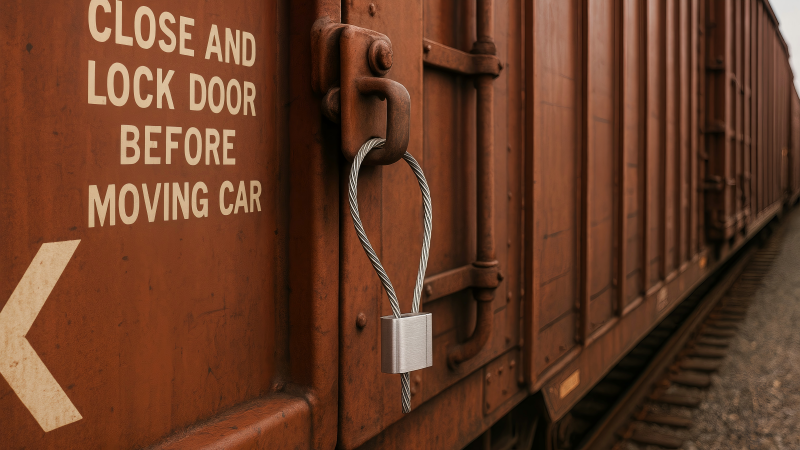
Intermodal transport is the backbone of global logistics, but it's also a logistical headache for accountability. I once had a client who faced huge losses because his container arrived by truck with a tampered seal, but both the rail and ocean carrier claimed it was secure when they handled it. The problem was a lack of a consistent sealing protocol. The seal applied at the port needs to be the same one inspected at the railyard and the final one cut at the destination warehouse. For railcars, especially tankers carrying liquids or hazardous materials, heavy-duty cable seals or barrier seals are critical. They can withstand the vibration and rough handling of rail transport. The core principle is that the seal is the "baton" in the relay race. Each new carrier inspects the seal before accepting the baton, thus accepting responsibility.
How Do You Ensure Warehouse and Distribution Center Integrity?
Theft doesn't only happen in transit. A significant amount of loss occurs within your own warehouse or distribution center, often from internal staff, and it’s notoriously hard to prove.
Applying security seals to high-value storage cages, outbound pallets, and specific aisles creates internal checkpoints. This action limits access and makes any breach immediately obvious and attributable to a specific time or shift.
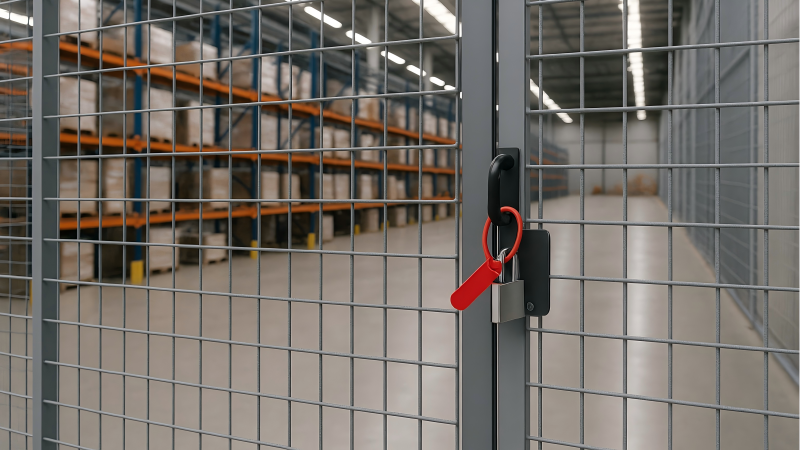
This is an area many businesses overlook. They secure the building but not the goods inside it. A warehouse is a point of transfer just like a port or railyard. Goods are transferred from receiving to storage, from storage to picking, and from picking to outbound staging. I always recommend using seals to manage these internal transfers, especially for high-value goods like electronics or pharmaceuticals. For example, once an order is picked and wrapped on a pallet, applying a simple tote seal or plastic strap seal with a unique number creates a secure unit. If that pallet arrives at the loading dock with a broken seal, you've narrowed down the potential time and location of the theft immensely. It moves inventory control from a matter of trust to a matter of verifiable fact.
How Is Sealing Used for Compliance and Critical Infrastructure?
You face heavy fines or operational shutdowns. Regulatory bodies and safety protocols require proof that critical valves, meters, or safety equipment have not been tampered with.
Seals provide a clear, visual guarantee of non-interference. Using uniquely numbered meter or wire seals on utility meters, safety valves, and fire extinguishers offers a low-cost, reliable compliance solution.
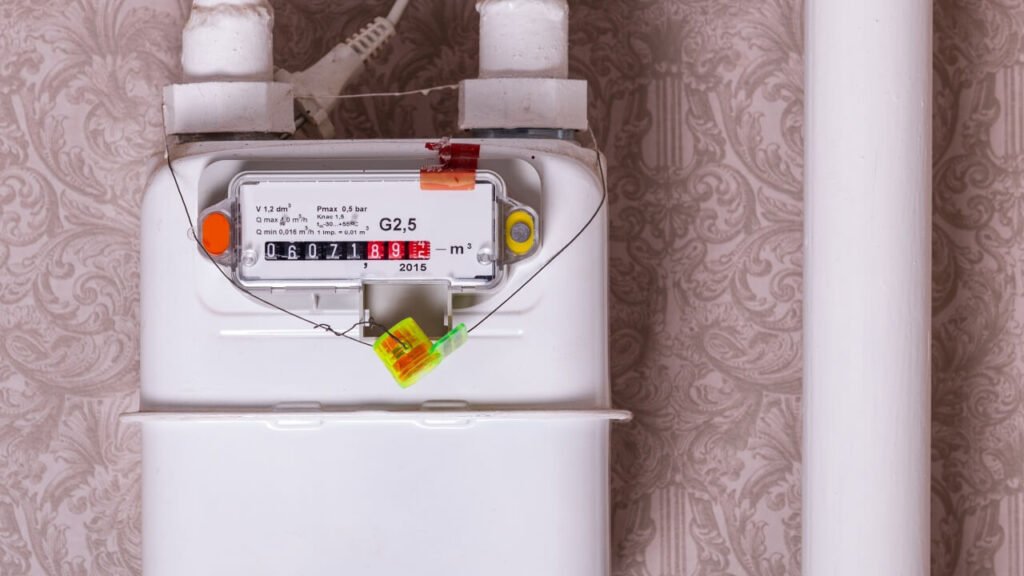
This final application is less about preventing theft and more about ensuring safety and regulatory compliance. Think of utility companies. They use simple wire seals to lock electric and water meters. The purpose of this mechanical seal isn't to stop a determined person with tools; it's to serve as legal proof of tampering.
If a technician finds a broken seal, the company has immediate justification to investigate for energy theft. The same logic applies to a factory's critical infrastructure. A safety valve that controls pressure must not be adjusted by unauthorized personnel. A simple seal provides a clear visual indicator of its status. In my work with industrial clients, we've used these to secure everything from fire hydrants to chemical spill kits. It’s the simplest way to enforce a "look, but don't touch" policy.
Conclusion
Stop seeing seals as just locks. Start using them as strategic tools to assign responsibility across your entire supply chain. This is how you move from fighting over losses to preventing them in the first place.
Build Your Chain of Responsibility with ProtegoSeal
Your supply chain is only as secure as its handovers. At ProtegoSeal, we specialize in creating the right "certificate of transfer" for every link in your chain. Contact us to design a sealing strategy that protects your goods from origin to destination.

